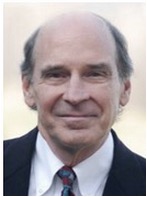Conservative economists writing in today’s Wall Street Journal dismiss the notion that the cost of providing medical care for the uninsured is eventually shifted onto those already insured. Citing an Urban Institute study that appeared in 2008 in Health Affairs, they claim the total cost shift is 1.7 percent at most, or $80 a year for the average plan. They also dismiss as flawed a Families USA study that found there was a significant rise in private insurance premiums to cover the cost of the uninsured.
How did the Democratic-controlled Congress that passed health care reform go wrong by accepting this premise?
Congress ignored the $40 billion to $50 billion that is spent annually by charitable organizations and federal, state and local governments to reimburse doctors and hospitals for the cost of caring for the uninsured. These payments, which amount to approximately three-fourths of the cost of such care, mitigate the extent of cost shifting and reduce the magnitude of the hidden tax on private insurance.
A few paragraphs later, they attack the health care reform law for relying on Medicaid to cover about half the uninsured who will receive coverage under the act:
Medicaid payments to doctors and hospitals are so low that the program creates a cost shift of its own. In fact, a long line of academic research shows that low rates of Medicaid reimbursement translate into higher prices for the privately insured.
So patients who pay nothing or almost nothing do not shift costs because the providers — doctors and hospitals, primarily — get mostly reimbursed for that care by charities and the government. Yet discounted payments through Medicaid are made whole by cost shifting to private plans.Continue reading…









 “We’re going to have to get back next year at entitlement reform, which is how you tackle the debt and the deficit. Frankly it’s the health-care entitlements that are the big drivers of our debt…that’s really where the problem lies, fiscally speaking.”
“We’re going to have to get back next year at entitlement reform, which is how you tackle the debt and the deficit. Frankly it’s the health-care entitlements that are the big drivers of our debt…that’s really where the problem lies, fiscally speaking.”  An old disagreement between Uwe Reinhardt and Sally Pipes in Forbes is a teachable moment. There’s a dearth of confrontational debates in health policy and education is worse off for it.
An old disagreement between Uwe Reinhardt and Sally Pipes in Forbes is a teachable moment. There’s a dearth of confrontational debates in health policy and education is worse off for it.







